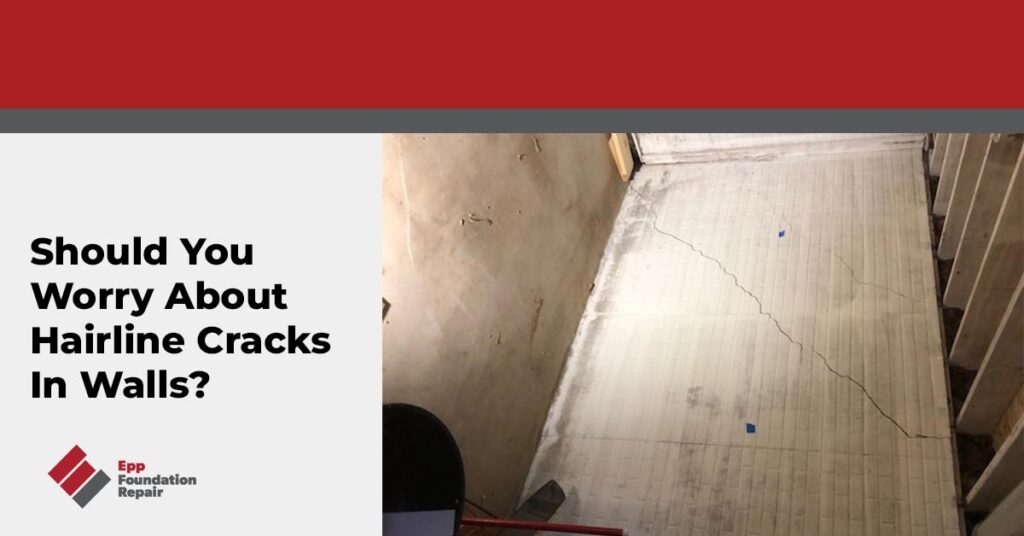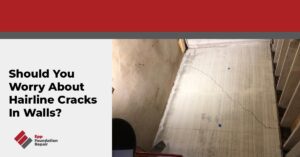Looking for information about hairline cracks in walls? If so, don’t hit that back button because you’ve landed on the right page. In this article, we’re going to review the causes of wall cracks in general, what causes hairline cracks in walls, structural vs. non-structural cracks, and more.
Structural Vs. Non-Structural Wall Cracks
Not all wall cracks are the same. There are structural wall cracks and non-structural wall cracks.
Structural wall cracks
Structural cracks are those that affect a building’s structural integrity. Signs a wall crack might be structural include the following:
- Wider than 1/10th of an inch
- Wider at one end
- Getting bigger
- Stair step cracks in brick or masonry
- Horizontal, with or without bowing
- Many vertical cracks next to each other
- Diagonal from the corners of windows and doors
- A crack that goes across the ceiling and down the wall
Structural cracks require immediate attention. Repair methods for structural wall cracks usually involve injecting epoxy resins, carbon fiber reinforcement, or steel plates.
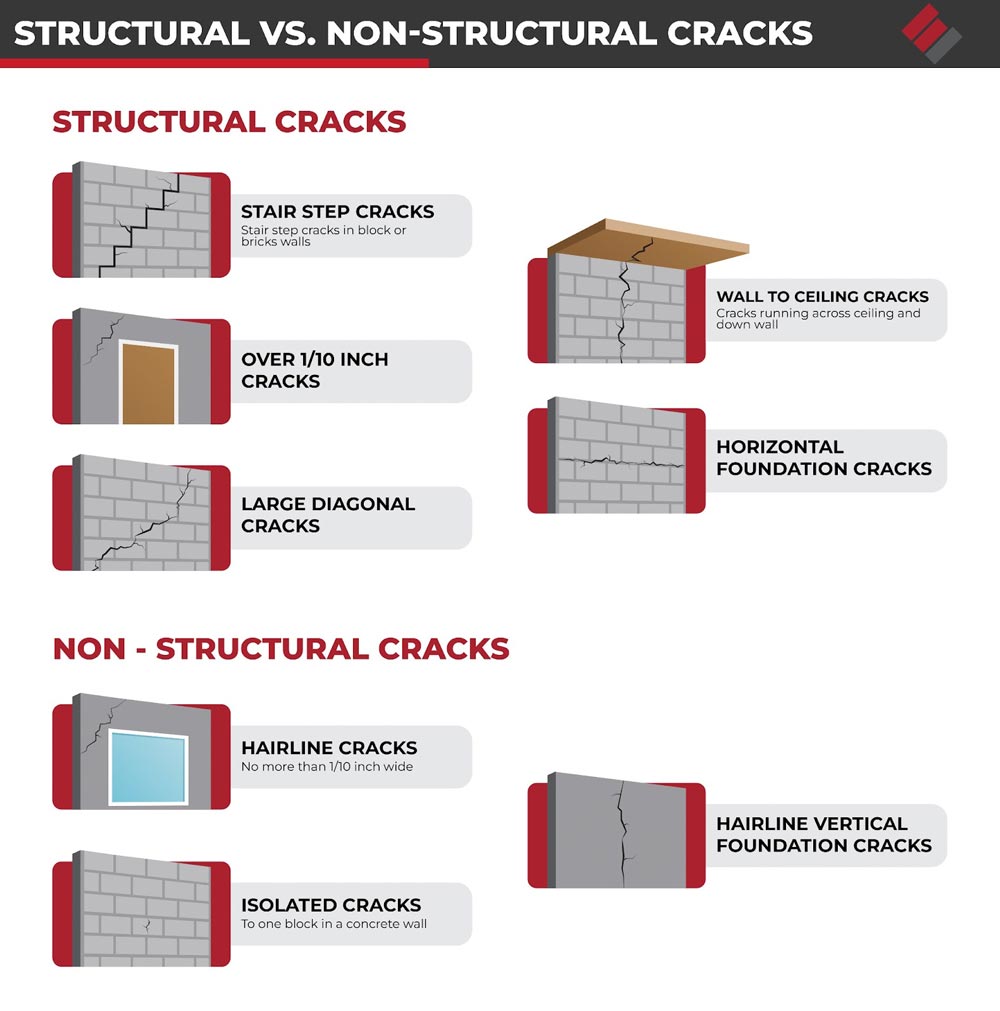
Non-structural hairline wall cracks
Non-structural hairline wall cracks are usually cosmetic and do not affect the building’s structural integrity. They are generally narrower than 1/10th of an inch (i.e., hairline) and often appear vertically.
For more information, see Structural or Non-Structural? Understanding Foundation Cracks.
What Causes Wall Cracks?
Causes of structural wall cracks
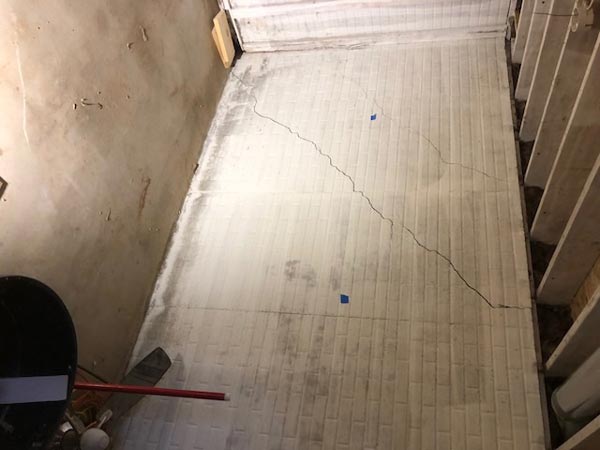
Most structural wall cracks are caused by differential settlement. Differential settlement happens when a foundation settles into the ground unevenly. It places immense stress on a foundation, leading to structural damage that manifests as wall cracks, uneven floors, and other issues. Differential settlement is caused by various things, including improper soil preparation, expansive soil, and natural disasters.
Causes non-structural hairline cracks in walls
Various things, including the following, can cause non-structural hairline wall cracks:
- Shrinkage during the concrete curing process – Hairline cracks in a poured concrete foundation wall can happen during the concrete curing process.
- Temperature fluctuations – Temperature fluctuations can cause walls to expand or contract, leading to cracks in paint or plaster. This is because the different materials used to construct buildings have varying thermal expansion rates.
- Humidity changes – When the air inside a room is moist, and the air outside is dry, the moisture in the wall can evaporate, leading to contraction and hairline cracks.
- Moisture – Poor drainage around a foundation can result in moisture penetrating the concrete. When water evaporates from concrete, it leaves behind salt deposits that may interfere with the adhesion of paint or wall finishes. This could cause cracks to form.
- Bad drywall installation – Sometimes, the drywall installer doesn’t use enough drywall mud. This can eventually cause the drywall tape to come loose, creating a crack.
- Wet drywall – A plumbing leak or leaking window can cause water damage to drywall, resulting in hairline cracks in walls.
- New construction – After a home is built, the foundation will settle very slightly into the ground. Sometimes, this can cause hairline wall cracks.
While non-structural hairline cracks in walls aren’t usually anything to be concerned about, there’s always the chance that you’re seeing the early stages of a structural crack. (If the crack gets bigger, it’s almost certainly structural.) Therefore, any time you see a wall crack – no matter the size – you should contact a foundation repair contractor and ask for an inspection.
If the crack turns out to be structural, it’s crucial to address it immediately. If you wait, the problem will worsen, and you’ll pay more for the repair. We’ll talk more about this in the next section.
Repairing Non-Structural Hairline Wall Cracks
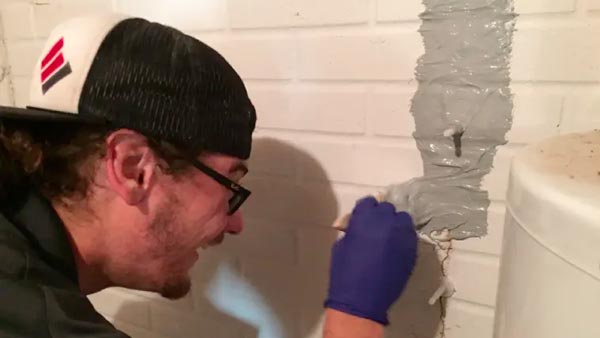
A non-structural foundation wall crack can be sealed using epoxy crack injection, a cost-effective solution that involves filling the crack with an epoxy adhesive. After the crack is thoroughly cleaned of any loose debris, the epoxy mixture is injected into the crack and then allowed to dry and cure. Once the epoxy has dried, any excess can be scraped off, and the surface sanded smooth for a clean finish.
When To Worry About A Wall Crack
You should be vigilant when it comes to wall cracks, regardless of their size. While small wall cracks may appear harmless, they can indicate a severe foundation problem. Unless you’re sure the hairline wall crack is non-structural, you should err on the side of caution, contact a foundation repair professional, and ask for an evaluation.
If you’re worried about hairline cracks in the walls of your home, contact us today to schedule a foundation evaluation. We’ll be able to tell you if the wall crack is structural or non-structural and give you a repair estimate. We serve areas in four states: Nebraska, Iowa, Kansas, and Missouri. The top cities we serve are Lincoln, Omaha, Grand Island, Kearney, Norfolk, and many more; contact us today for a free estimate.

